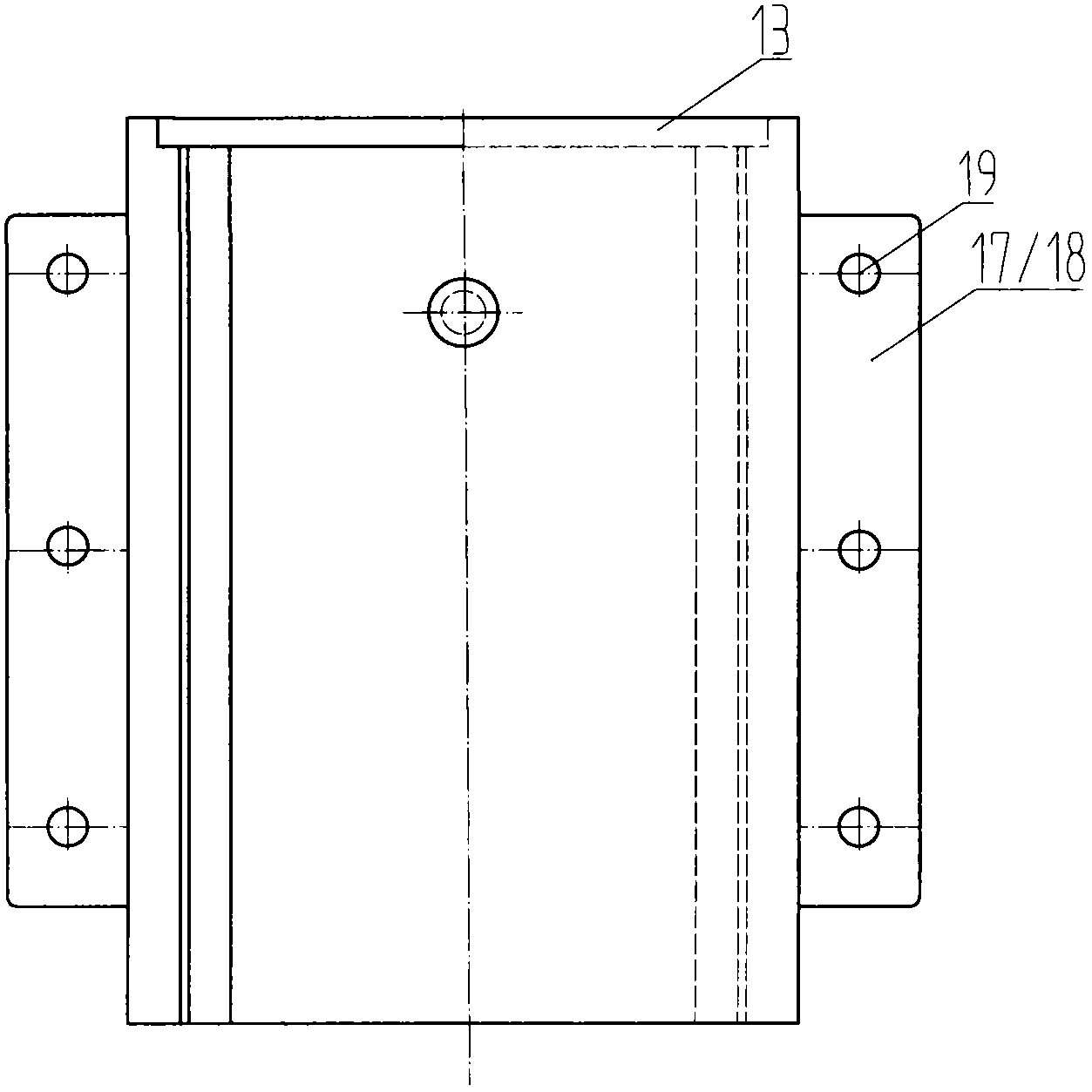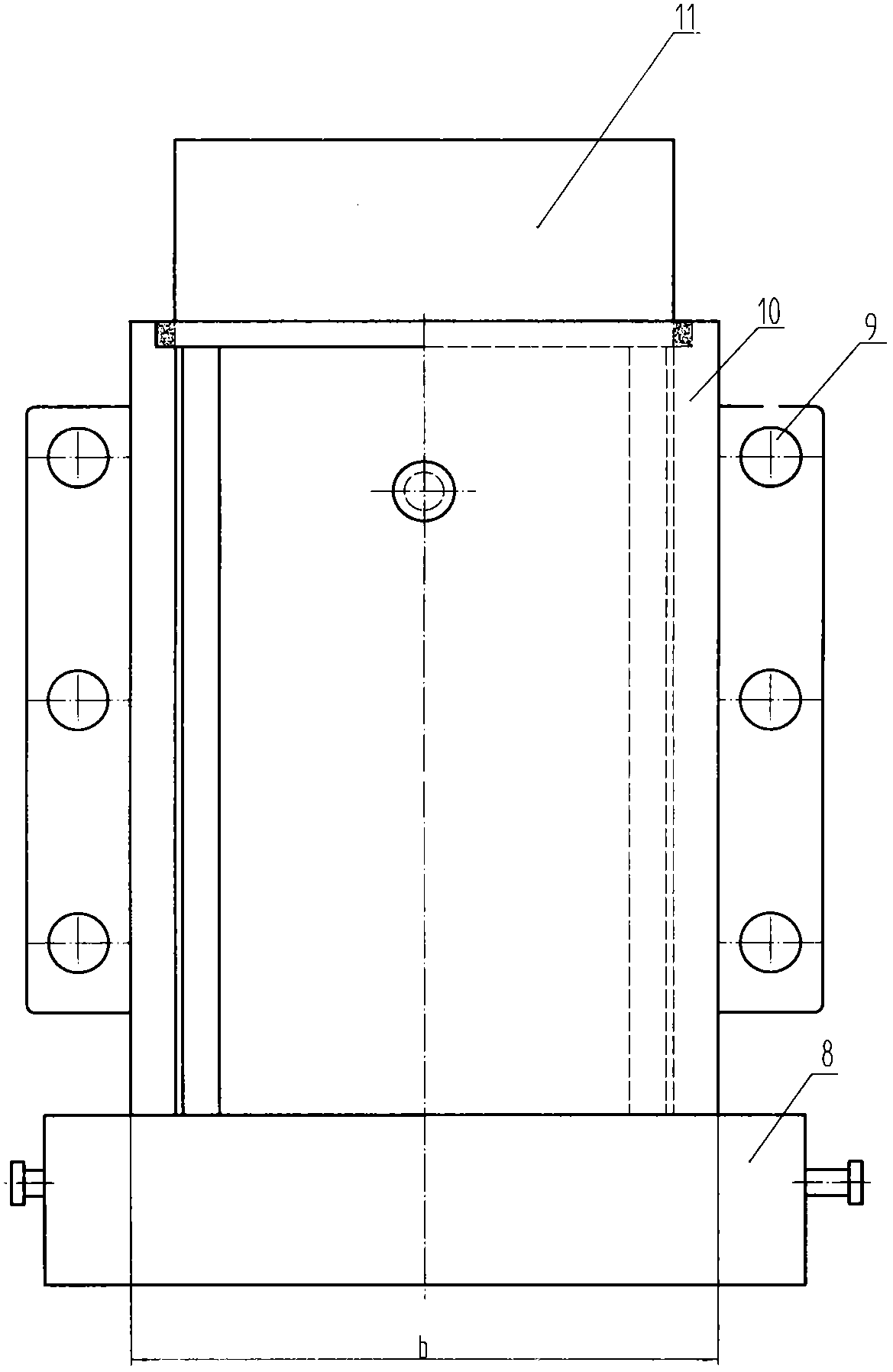Production method of corrosion resistant alloy plates and split type pouring die used by same
A corrosion-resistant alloy and split-type technology is applied in the field of production methods and split-type casting molds, which can solve the problems of complex processing procedures and high energy consumption, reduce workload and work intensity, simplify processes, and achieve significant economic benefits. Effect
- Summary
- Abstract
- Description
- Claims
- Application Information
AI Technical Summary
Problems solved by technology
Method used
Image
Examples
Embodiment 1
[0030] The material of the produced plate is NiCu alloy, the length of the slab is 500mm, the width is 500mm, and the thickness is 200mm.
[0031] The split-type casting mold of the present invention has no taper in its cavity and a quadrangular pyramid shape in appearance, the minimum thickness of the mold wall is 100mm, the maximum thickness is 175mm, and the taper is 15%; The number of pouring holes is two, evenly distributed, and vacuum pouring is performed, and the vacuum degree is less than 10Pa.
[0032] Comparative Example of Example 1
[0033] The material and specification of the produced plate are the same as in Example 1;
[0034] Cast the ingot with a taper integral casting mold in the prior art to obtain an ingot with a body size of Φ400 / Φ300×810mm; peel the ingot with a lathe, then cut the riser with a sawing machine, and then cut the ingot with a lathe. Forging is carried out to remove the taper of the ingot itself to form a rough slab. The rough slab is first ...
Embodiment 2
[0036] The specifications of the slab are: 600mm in length, 400mm in width, and 150mm in thickness;
[0037] The minimum thickness of the mold wall is 100mm, the maximum thickness is 150mm, the taper is 8%, and the rest are the same as in Example 1.
[0038] Comparative Example of Example 2
[0039] The materials and specifications of the produced plates are the same as those in Example 2.
[0040] The size of the ingot body part of the ingot is Φ340 / Φ340×830mm, and the rest are the same as the control example of Example 1.
Embodiment 3
[0042] Specifications of the slab: length is 870mm, width is 600mm, thickness is 300mm. The minimum wall thickness of the mold wall is 100, the thickest part is 200, the taper is 11.5%, and the rest are the same as in Example 1.
[0043] Comparative Example of Example 3
[0044] The materials and specifications of the produced plates are the same as those in Example 3.
[0045] The size of the ingot body part of the ingot is Φ600 / Φ530×815mm, and the rest are the same as the control example of Example 1.
[0046] Table 1 Comparison of the mechanical properties of the corrosion-resistant alloy sheet produced by the method of the present invention and the corrosion-resistant alloy sheet produced by the prior art
[0047]
[0048] In this table, the width of the sheet corresponds to the length of the slab in the corresponding example.
PUM
 Login to View More
Login to View More Abstract
Description
Claims
Application Information
 Login to View More
Login to View More - R&D
- Intellectual Property
- Life Sciences
- Materials
- Tech Scout
- Unparalleled Data Quality
- Higher Quality Content
- 60% Fewer Hallucinations
Browse by: Latest US Patents, China's latest patents, Technical Efficacy Thesaurus, Application Domain, Technology Topic, Popular Technical Reports.
© 2025 PatSnap. All rights reserved.Legal|Privacy policy|Modern Slavery Act Transparency Statement|Sitemap|About US| Contact US: help@patsnap.com



